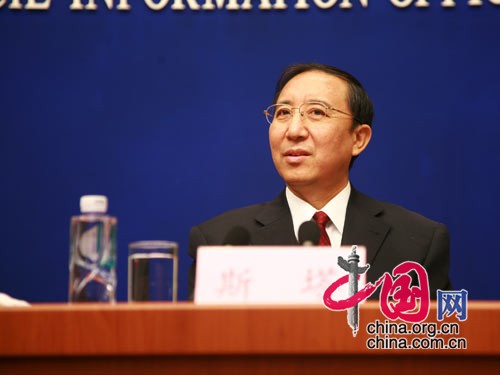 |
|
Sitar, executive vice minister of the United Front Work Department (UFWD) of the Communist Party of China (CPC) Central Committee.
|
The so-called "Tibet government-in-exile" is a product created by a small group of separatists who launched an armed rebellion in 1959, but failed, and then fled to some foreign countries, he added.
"It has been engaged in splitting activities and sabotage for decades," said Zhu. "Its existence is illegal and no state in the whole world recognizes it."
"We talked with Mr. Lodi Gyari and his party only because they were the Dalai Lama's private representatives," he noted.
Zhu said the topics only focused on how the Dalai Lama should completely give up his ideas and actions to split with China and should instead strive for the understanding of the central authorities and all Chinese people so as to solve the issue concerning his own prospect.
Zhu said a large numbers of obscure words were intentionally used in the Memorandum, showing that the Dalai Lama and his followers have not given up their consistent opinions to split with China.
Zhu said the so-called "genuine autonomy" and other requests mentioned in the Memorandum intended to set central leadership against the regional ethnic autonomy system so as to deny, restrict and weaken the authority of the central authorities as well as the authority of the National People's Congress in legislation.
"What's more, the splitting clique tried to change the Constitution so that it could actually possess rights as an independent state does," Zhu said.
He went on to say the Memorandum's title and contents referred to a "Greater Tibetan-inhabited Area" and "high degree of autonomy".
"They are exactly the same as 'half independence' and 'independence in a disguised form', which are not tolerated in the Constitution," Zhu said.
As for the request that "all Tibetan autonomous regions are integrated into one autonomous region" mentioned in the Memorandum, Zhu said Tibetan autonomous areas were established and defined according to the principles stipulated in the Constitution and on the basis of fully respecting history and facts and comprehensively considering political, economic conditions and reality.
"The so-called 'Greater Tibet' did not exist in history, nor does it have an actual ground," he said.